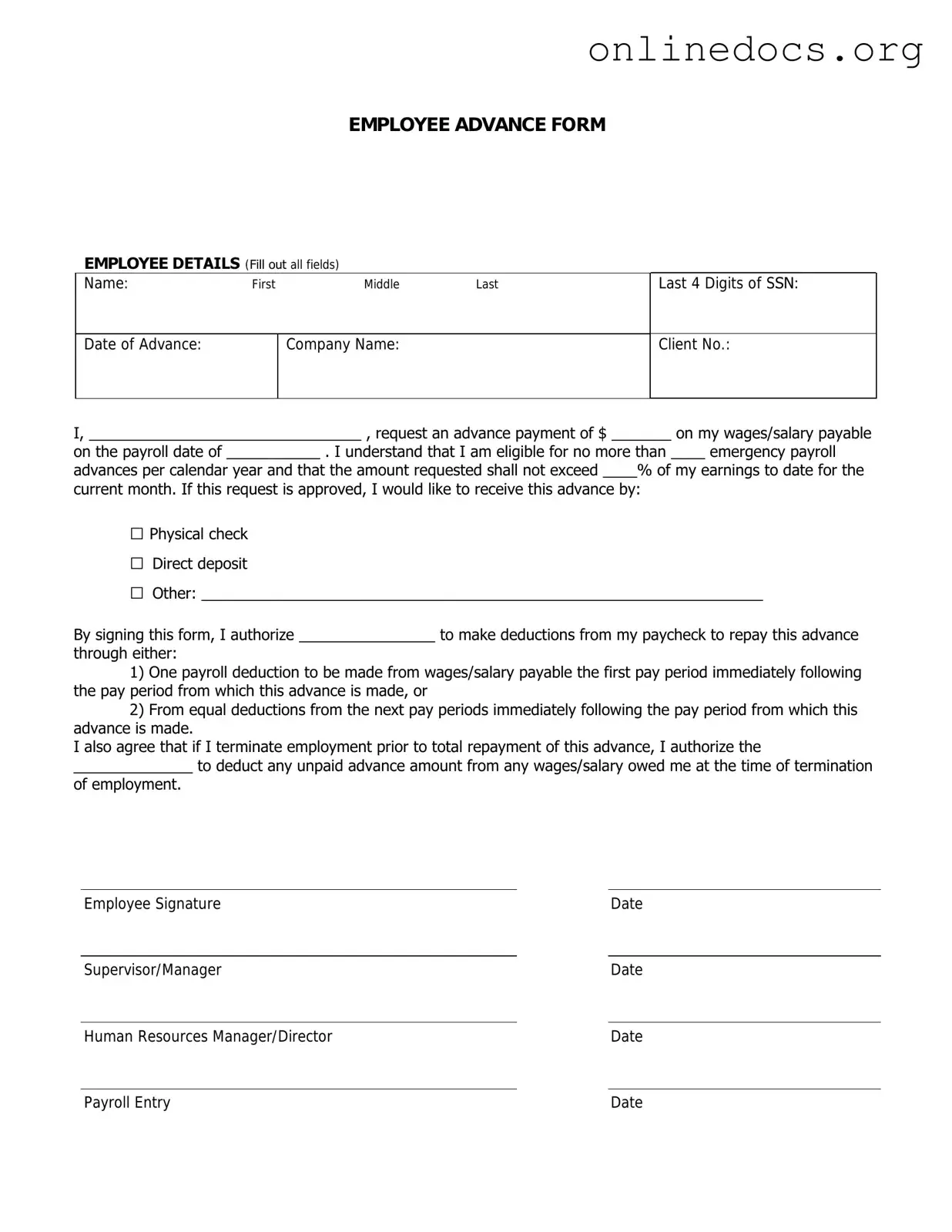The Employee Reimbursement Form serves a similar purpose as the Employee Advance form. Both documents are designed to facilitate the financial processes within an organization. While the Employee Advance form allows employees to request funds before incurring expenses, the Reimbursement Form is used after expenses have been paid out of pocket. Each form requires detailed information about the purpose of the request, the amount, and supporting documentation to ensure transparency and accountability in financial transactions.
The Travel Authorization Form is another document that shares similarities with the Employee Advance form. This form is typically used to gain approval for business-related travel expenses before they occur. Like the Employee Advance, it requires justification for the costs involved. Both documents aim to manage company resources effectively, ensuring that funds are allocated appropriately and that employees are clear on what expenses will be covered by the organization.
In California, having the appropriate documentation when completing a transaction is essential, and this is where the Trailer Bill of Sale form comes into play. It serves as a formal record that verifies the sale and ownership transfer of a trailer, providing essential details to both parties involved. This not only aids in clarification but also ensures compliance with state regulations for registration purposes. For those looking to easily obtain this form, resources are available at legalformspdf.com.
The Purchase Order (PO) is also comparable to the Employee Advance form. A Purchase Order is used to authorize the purchase of goods or services, while the Employee Advance form is used for cash advances. Both documents require detailed descriptions of what is being requested and often need managerial approval. They help organizations track spending and maintain budgetary control, ensuring that all financial commitments are documented and justified.
Lastly, the Expense Report is closely related to the Employee Advance form. This document is filled out after expenses have been incurred, detailing all costs associated with a specific project or task. While the Employee Advance form requests funds ahead of time, the Expense Report serves as a record of how those funds were used. Both forms aim to promote financial responsibility and require accurate record-keeping to support the organization’s financial integrity.
